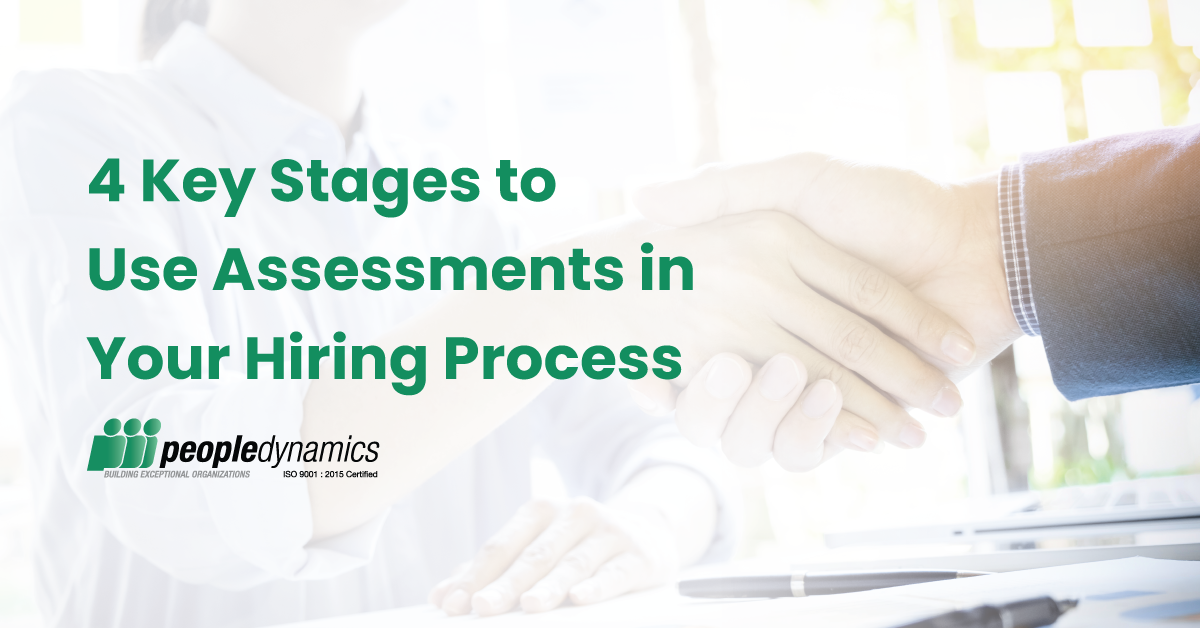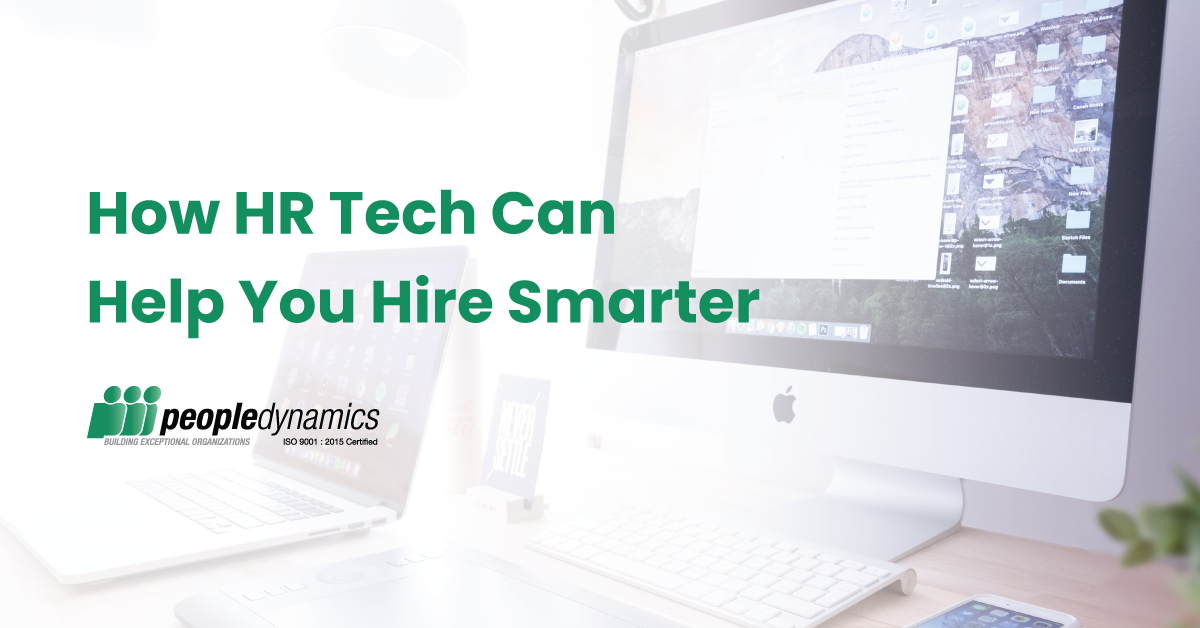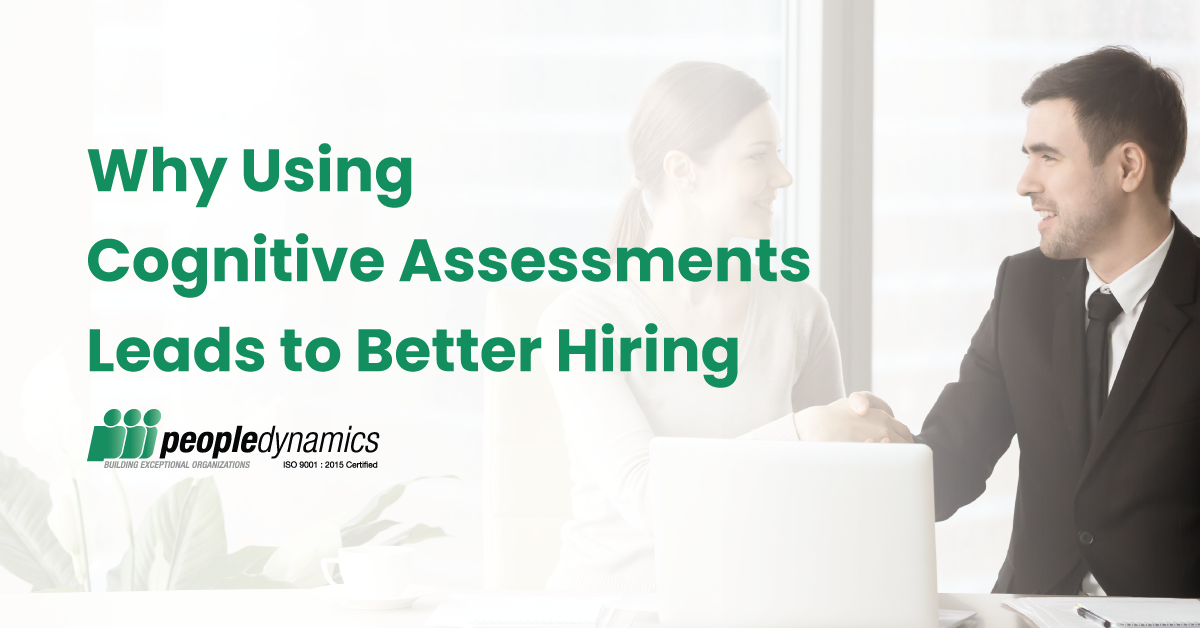Skills, personality, and competency assessments are increasingly popular in recruitment. However, for many organizations, there’s a large difference between understanding that they help with hiring, placement, and even narrowing the candidate pool and actually implementing them to that end. Here, organizations must balance the need for data with the candidate’s willingness or ability to spend potentially hours per job application on assessments.
Often, the answer is to spread assessments out over the hiring process, so that people only have to invest time once they’ve cleared a hiring level. That’s especially true in low-skill and junior jobs, where even highly qualified candidates are very likely to have applied to 5-10 roles (at minimum). If your organization is looking to integrate assessments into the hiring process, the following four key stages should be a priority.
Screening assessments
Early recruitment assessments can help you to narrow the candidate pool to a manageable size. Here, assessments should be kept as short as possible—with the goal of ensuring everyone meets the basic skills and competency requirements for the role. This means:
- Mapping competency requirements across the organization so that every role has a competency framework
- Prioritizing competencies for the role with the team lead (e.g., what are the “must-haves” for the role? What can be trained in?). If you test for a few competencies, you want to ensure they are must-haves. And, unfortunately, that changes from team to team. Therefore, the best practice is always to sit down with the team lead before creating the assessment.
You’ll also want to make early screening and assessments virtual or over the phone. That reduces commitment and means you’ll spend as little as possible on unqualified candidates. Here, a quick virtual assessment is almost always the best call.
Pre-interview
A pre-interview assessment follows up on the screening assessment to serve as a second touchpoint with the candidate. At this point, it’s important that the candidate has been informed they’ve moved into the second stage of hiring. In addition, being clear about the number of stages ensures that they can decide how much time they want to commit and if the process is right for them.
Again, the shorter you keep this the better. However, it’s generally a good idea to assess the “nice-to-have” skills, soft competencies, and personality traits of the candidate. This can help you to narrow a pool based on how people are likely to fit into teams, how they work with existing leaders, and to ensure that person is a good fit for the organization and vice versa.
In this case, you likely want to have general organizational cultural priorities, personality traits and communication styles, and an understanding of the team’s work and leadership style. Here, a DISC assessment can offer a considerable amount of information, but you might want something lighter depending on the level of the role. For example, if this is a junior position, go for shorter. If it’s a senior role, the candidate likely expects to invest some time anyway.
During the interview
Integrating behavioral assessments into an interview is a common tactic. However, it’s important to ensure that people know how to use behavioral assessments and how to use the data. In addition, candidates go into these positions expecting behavioral questions. Many will even have prepared lists of the most common questions and assessments, and even Harvard Business offers advice on how best to pass them.
Therefore, it can be beneficial to avoid using standard lists of behavioral assessments. You might want to check behavior by introducing the person to a team. Or, by posing theoretical questions to problems the organization actually faces. Most people are very good at preparing answers to expected questions and it is good to allow them to show that off – because that also shows behavior. However, you don’t want to go too “by the book”.
Here, the most important steps include:
- Make sure interviewers know what questions are for and why
- Make sure the interviewers know what responses they are looking for
- Prioritize what you want to see and why (if you’re hiring for a strategic role, you probably want someone who sits down to think about a problem instead of someone who immediately jumps to a solution). Different traits best serve different types of roles
Behavioral interviews are extremely common. Today, there are many forms of behavioral interview tools you can use to set up, guide, and record those interviews. Once you have that option in place, it’s important to prioritize what behaviors or competencies work with each role and at each level, why, and what those behaviors look like in the assessment or on paper.
After the hire
Once you’ve agreed to make a hire, you can ask your candidate to invest significantly more time in assessments.
That gives you the opportunity to use assessments for determining skills gaps, placing the new hire in specific teams, adjusting their role or coaching to meet their specific needs, and ensuring onboarding goes well.
Again, in order for any assessment to be successful, you have to know what you’re looking for and why. That means having frameworks mapped, having profiles for jobs, teams, and leaders, and maintaining personality profiles across teams.
Once you have that, you can easily use assessments to see exactly what a new hire needs to succeed–whether that’s training and coaching in a new tool or software or hands-on coaching to help them get up to speed.
Depending on your organization, assessments might be geared towards skills, personality, communication style, management style, etc. If you can track and measure data and how it benefits your organization, you can assess it and try to fit the right people into the right places or give people the training they need to fit into a new team or role.
Wrapping up — Use hiring assessments to make more strategic decisions
Setting up assessment-based recruitment relies on knowing what you’re looking for. Often, mapping competencies, building job profiles, and mapping teams and personalities is the most costly and time-consuming aspect of implementing assessments. However, once you do, you’ll have the tools to hire based on diverse factors and how people fit based on behavior, personality, communication, and soft skills, instead of just hard skills mapped to a job profile.




